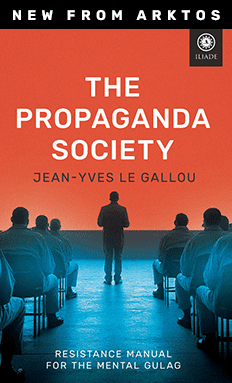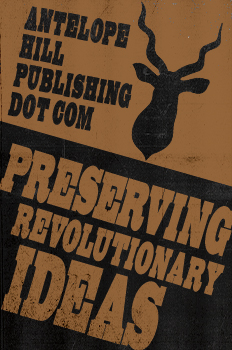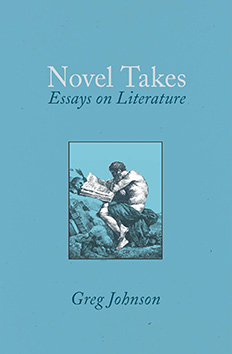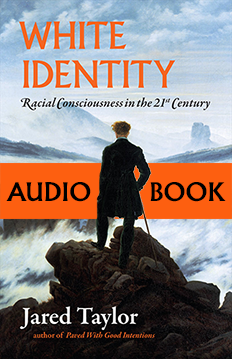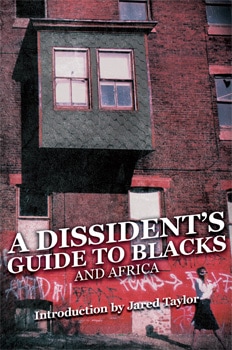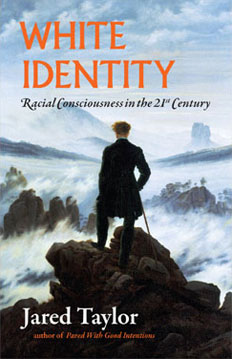Identity Politics and Sotomayor
Stuart Taylor, National Journal, May 23, 2009
“I would hope that a wise Latina woman with the richness of her experiences would more often than not reach a better conclusion [as a judge] than a white male who hasn’t lived that life.”–Judge Sonia Sotomayor, in her Judge Mario G. Olmos Law and Cultural Diversity Lecture at the University of California (Berkeley) School of Law in 2001
The above assertion and the rest of a remarkable speech to a Hispanic group by Sotomayor–widely touted as a possible Obama nominee to the Supreme Court–has drawn very little attention in the mainstream media since it was quoted deep inside The New York Times on May 15.
It deserves more scrutiny, because apart from Sotomayor’s Supreme Court prospects, her thinking is representative of the Democratic Party’s powerful identity-politics wing.
Sotomayor also referred to the cardinal duty of judges to be impartial as a mere “aspiration because it denies the fact that we are by our experiences making different choices than others.” And she suggested that “inherent physiological or cultural differences” may help explain why “our gender and national origins may and will make a difference in our judging.”
So accustomed have we become to identity politics that it barely causes a ripple when a highly touted Supreme Court candidate, who sits on the federal Appeals Court in New York, has seriously suggested that Latina women like her make better judges than white males.
Indeed, unless Sotomayor believes that Latina women also make better judges than Latino men, and also better than African-American men and women, her basic proposition seems to be that white males (with some exceptions, she noted) are inferior to all other groups in the qualities that make for a good jurist.
Any prominent white male would be instantly and properly banished from polite society as a racist and a sexist for making an analogous claim of ethnic and gender superiority or inferiority.
{snip}
I have been hoping that despite our deep divisions, President Obama would coax his party, and the country, to think of Americans more as united by allegiance to democratic ideals and the rule of law and less as competing ethnic and racial groups driven by grievances that are rooted more in our troubled history than in today’s reality.
I also hope that Obama will use this Supreme Court appointment to re-inforce the message of his 2004 Democratic convention speech: “There’s not a black America, and white America, and Latino America, and Asian America; there’s the United States of America.”
But in this regard, the president’s emphasis on selective “empathy” for preferred racial and other groups as “the criteria by which I’ll be selecting my judges” is not encouraging, as I explained in a May 15 post on National Journal’s The Ninth Justice blog.
As for Sotomayor’s speech, fragmentary quotations admittedly cannot capture every qualification and nuance. She also stressed that although “men lawyers .&nsbp;. . need to work on” their “attitudes,” many have already reached “great moments of enlightenment.” She noted that she tries to be impartial. And she did not overtly suggest that judges should play identity politics.
{snip}
The full text of the speech, as published in the Berkeley La Raza Law Journal in 2002, is available on The New York Times website. (It says that the speech was in 2002; I’ve read elsewhere that it was October 2001.)
To some extent, Sotomayor’s point was an unexceptionable description of the fact that no matter how judges try to be impartial, their decisions are shaped in part by their personal backgrounds and values, especially when the law is unclear. As she detailed, for example, some studies suggest that female judges tend to have different voting patterns than males on issues including sex discrimination.
{snip}
Do we want a new justice who comes close to stereotyping white males as (on average) inferior beings?
{snip}
I do not claim that the very different worldview displayed in Sotomayor’s speech infuses her hundreds of judicial opinions and votes rendered over more than a decade on the Appeals Court. But only a few of her cases have involved the kind of politically incendiary issues that make the Supreme Court a storm center.
IIn one of her few explosive cases, Sotomayor voted (without writing an opinion) to join two colleagues in upholding what I see as raw racial discrimination by New Haven, Conn. The city denied promotions to the firefighters who did best on a test of job-related skills because none was black. (See my column, “New Haven’s Injustice Shouldn’t Disappear.”)
{snip}
Obama Chooses Sotomayor for Supreme Court
Deborah Tedford, NPR, May 26, 2009
President Obama on Tuesday nominated U.S. Circuit Judge Sonia Sotomayor to serve on the Supreme Court, tapping the daughter of Puerto Rican parents to succeed retiring Justice David Souter and become the first Hispanic to serve on the high court.
Calling Sotomayor “an inspiring woman,” Obama said that he looked not only at intellect and the ability to be impartial, but at life experience and the ability to relate to ordinary Americans in choosing Sotomayor as his nominee.
At a White House news conference, Sotomayor thanked the president for “the most humbling honor” of her life. “My heart today is bursting with gratitude,” she said.
If confirmed by the Senate, the 54-year-old judge will bring nearly 17 years of experience on the federal bench and a history of bipartisan appeal to the high court. She was first appointed to federal bench in the Southern District of New York in 1992 by President George H.W. Bush and was named to the 2nd Circuit Court of Appeals by President Bill Clinton in 1998.
Hispanic Groups Laud Choice
Obama said Sotomayor has more experience as a judge than any of the justices had when they were nominated for their positions on the high court.
Hispanic groups lauded the president’s choice. “The Supreme Court should reflect the diverse population of the United States to ensure that our nation’s highest court understands the unique circumstances of all Americans,” said Brent Wilkes, national executive director of the League of United Latin American Citizens.
If confirmed, Sotomayor will join Justice Ruth Bader Ginsburg as the second woman on the current court and the third in history. Sotomayor, like the retiring Souter, is expected to vote with the court liberals.
Republicans are not expected to put up much of a fight against the nomination. Democratic National Committee Chairman Tim Kaine said Republicans would have a difficult time taking on a judge that was first appointed to the federal bench by Republican.
“She’s been pretty carefully vetted and analyzed already, so I would find it unusual if they were to decide to try to take her on,” Kane said.
Republican National Committee Chairman Michael Steele said the upcoming court vacancy provides an opportunity to discuss the role the Supreme Court has in the daily lives of Americans.
“Republicans look forward to learning more about federal appeals court judge Sonia Sotomayor’s thoughts on the importance of the Supreme Court’s fidelity to the Constitution and the rule of law,” Steele was quoted saying on the RNC Web site.
Republicans Want Time for Debate
Senate Republican leader Mitch McConnell of Kentucky said his colleagues will treat Sotomayor fairly but want time to debate her qualifications.
“We will thoroughly examine her record to ensure she understands that the role of a jurist in our democracy is to apply the law even-handedly, despite their own feelings or personal or political preferences,” McConnell said in a statement posted on his Web site.
Sotomayor predicted senators would come to see her as an ordinary person who has had some extraordinary opportunities.
“I hope that as the Senate and American people learn more about me, they will see that I am an ordinary person who has been blessed with extraordinary opportunities and experiences,” Sotomayor said.
During the East Room announcement, the president cited Sotomayor’s educational accomplishments at Princeton University–where she graduated summa cum laude in 1976–and Yale University Law School. He also said her stint trying criminal cases as an assistant district attorney in Manhattan after her graduation from Yale Law School, corporate law experience and time as a trial judge gave her an edge because she has seen the judicial system from many perspectives.
One of her most prominent rulings came in 1995, when she sided with Major League Baseball players in a labor strike that had led to the cancellation of that season’s World Series.
“Over a distinguished career that spans three decades, Judge Sotomayor has worked at almost every level of our judicial system, providing her with a depth of experience and a breadth of perspective that will be invaluable as a Supreme Court justice,” Obama said.
The president also said he was moved by her inspirational personal story.
Sotomayor was raised in a housing project in New York’s South Bronx by Puerto Rican parents who came to the United States during World War II. Her father was a factory worker who had a third-grade education and spoke no English. He died when she was 9, a year after she was diagnosed with Type 1, or juvenile, diabetes.
Sotomayor said she was strongly influenced by her mother, who served in the Women’s Army Corps and often worked two jobs to support Sotomayor and her brother, Juan.
“I have often said that I am all I am because of her, and I am only half the woman she is,” Sotomayor said, recognizing her mother and other family members seated in the audience as the president announced her nomination.
An Upward Career Path
Obama said the couple believed in the American dream and the power of education. Sotomayor attended Catholic school and went on to attend Princeton and Yale.
From 1984 until her appointment to the bench, Sotomayor practiced international business law at the New York-based firm of Pavia & Harcourt LLP. There, she focused on intellectual property issues and litigation and arbitration of commercial and commodity export trading cases, according to her appeals court biography.
Later, Sotomayor became a member of the 2nd Circuit Task Force on Gender, Racial and Ethnic Fairness in the Courts, which was established in 1993 to examine the effect of bias on court employees and litigants. She has also remained active in legal education, serving as an adjunct professor at New York University School of Law from 1998-2007 and as a lecturer-in-law at Columbia Law School since 1999.
She has also served on the Board of Directors of the State of New York Mortgage Agency, the New York City Campaign Finance Board, the Puerto Rican Legal Defense and Education Fund and the Maternity Center Association.





